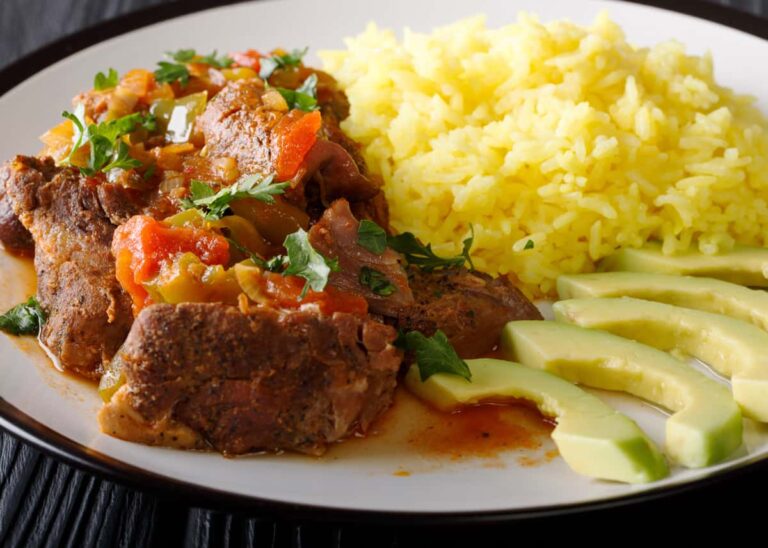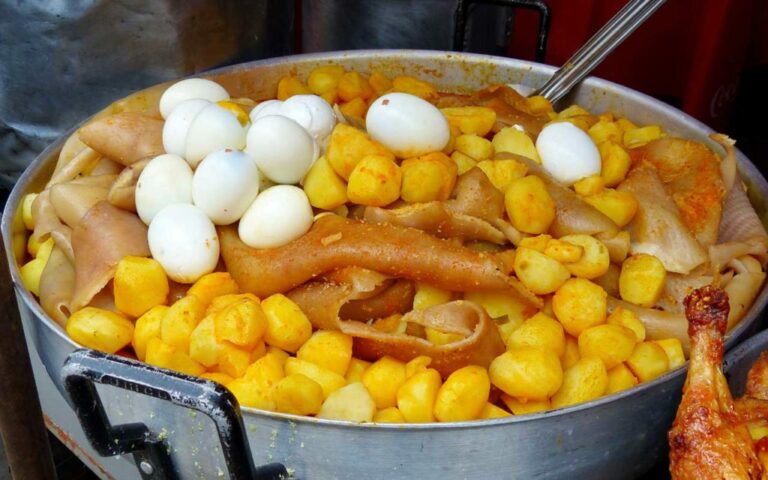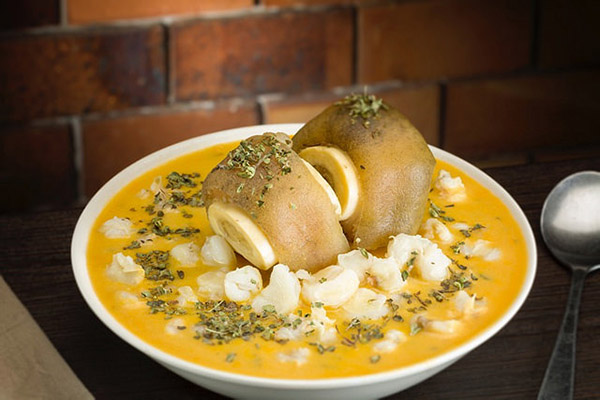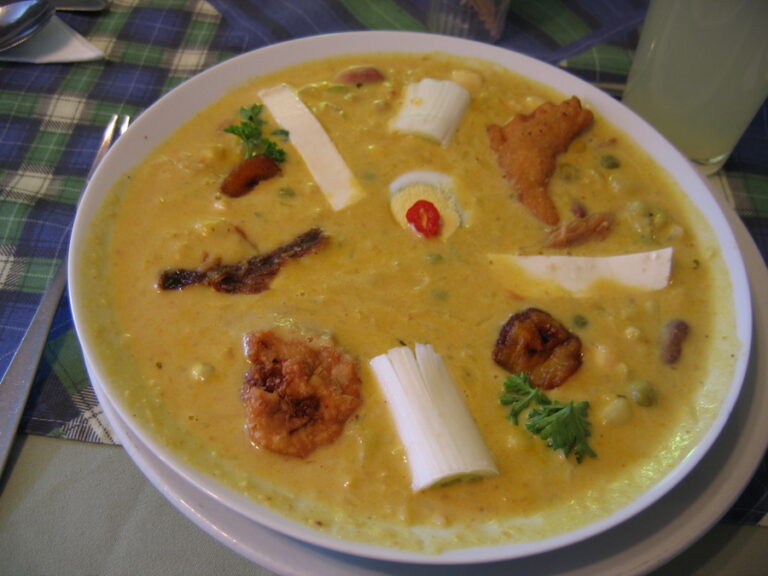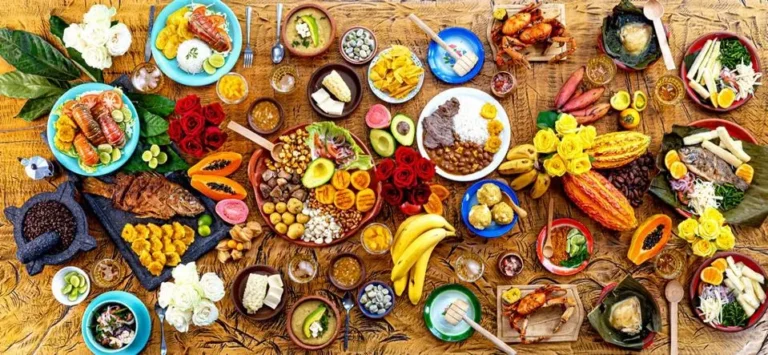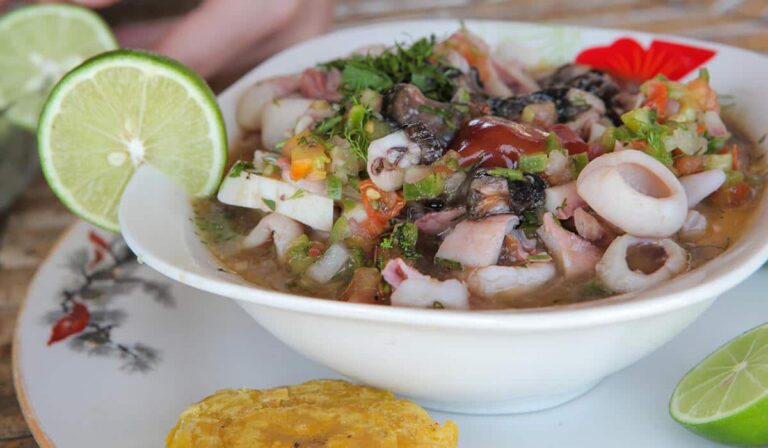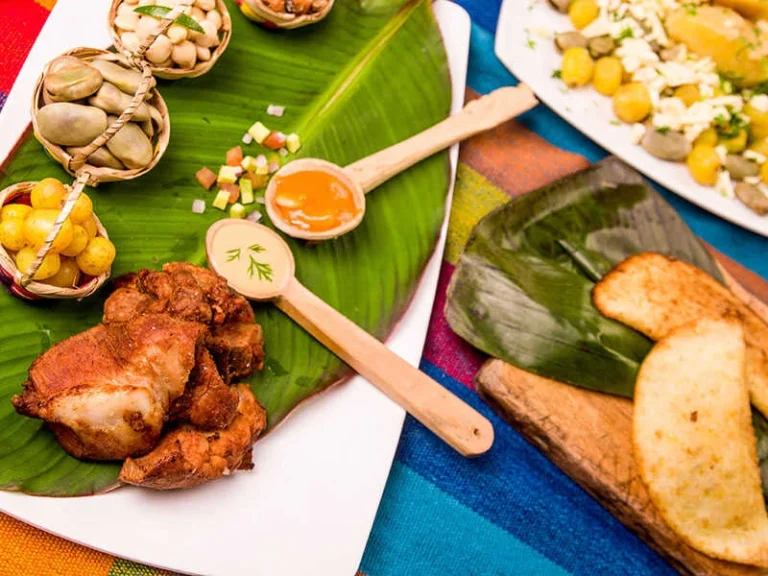Introduction: Ecuadorian cuisine
Ecuadorian cuisine is diverse and flavorful, with a variety of dishes that reflect the country’s cultural and geographic diversity. The cuisine has been shaped by indigenous, Spanish, and African influences, resulting in a fusion of flavors and techniques. One of the main ingredients in Ecuadorian cuisine is meat, which is consumed in various forms throughout the country. In this article, we will explore some of the most popular meat dishes in Ecuador.
Seco de chivo: braised goat
Seco de chivo is a hearty stew made with braised goat meat, onions, garlic, cumin, and beer. The dish is typically served with rice, avocado, and a side of fried plantains. The meat is cooked slowly in a flavorful broth until it is tender and falls off the bone. The dish is a favorite among locals and is often enjoyed during festivals and special occasions.
Llapingachos: potato and meat patties
Llapingachos are potato and meat patties that are often served as a side dish or appetizer. The patties are made with mashed potatoes, cheese, and a filling of ground beef or pork. They are then fried until crispy and served with a peanut sauce, lettuce, and tomato. Llapingachos are a popular comfort food in Ecuador and are often served with a cup of hot chocolate on a cold day.
Hornado: roasted pork
Hornado is a traditional Ecuadorian dish that consists of a whole roasted pig that has been marinated in a mixture of spices and herbs. The meat is slow-roasted over a wood fire until it is crispy on the outside and tender on the inside. The dish is typically served with mote (boiled corn), potato patties, and a spicy sauce. Hornado is a popular dish during festivals and family gatherings.
Fanesca: traditional soup with meat
Fanesca is a traditional soup that is typically served during Easter in Ecuador. The soup is made with a variety of grains, beans, vegetables, and meats, including beef, pork, and chicken. The dish is flavored with a mixture of spices and herbs, including annatto, cumin, and cilantro. The soup is served hot with a side of empanadas and is a symbol of unity and diversity in Ecuadorian culture.
Cuy: roasted guinea pig
Cuy, or roasted guinea pig, is a traditional dish in the Andean region of Ecuador. The dish is typically served whole, with the head and feet intact. The meat is seasoned with spices and herbs and roasted over an open flame until it is crispy on the outside and tender on the inside. Cuy is a delicacy in Ecuador and is often served during special occasions and festivals.
Arroz con menestra y carne asada: rice with stew and grilled meat
Arroz con menestra y carne asada is a staple dish in Ecuadorian cuisine. The dish consists of rice, a stew made with beans, onions, and garlic, and grilled beef or pork. The dish is often served with a side of avocado, plantains, and aji (spicy sauce). Arroz con menestra y carne asada is a popular lunch dish in Ecuador and is enjoyed by locals and visitors alike.
In conclusion, Ecuadorian cuisine offers a variety of meat dishes that reflect the country’s cultural and geographic diversity. From slow-braised goat to roasted guinea pig, these dishes are a reflection of the country’s rich culinary history and are enjoyed by Ecuadorians and visitors alike.

